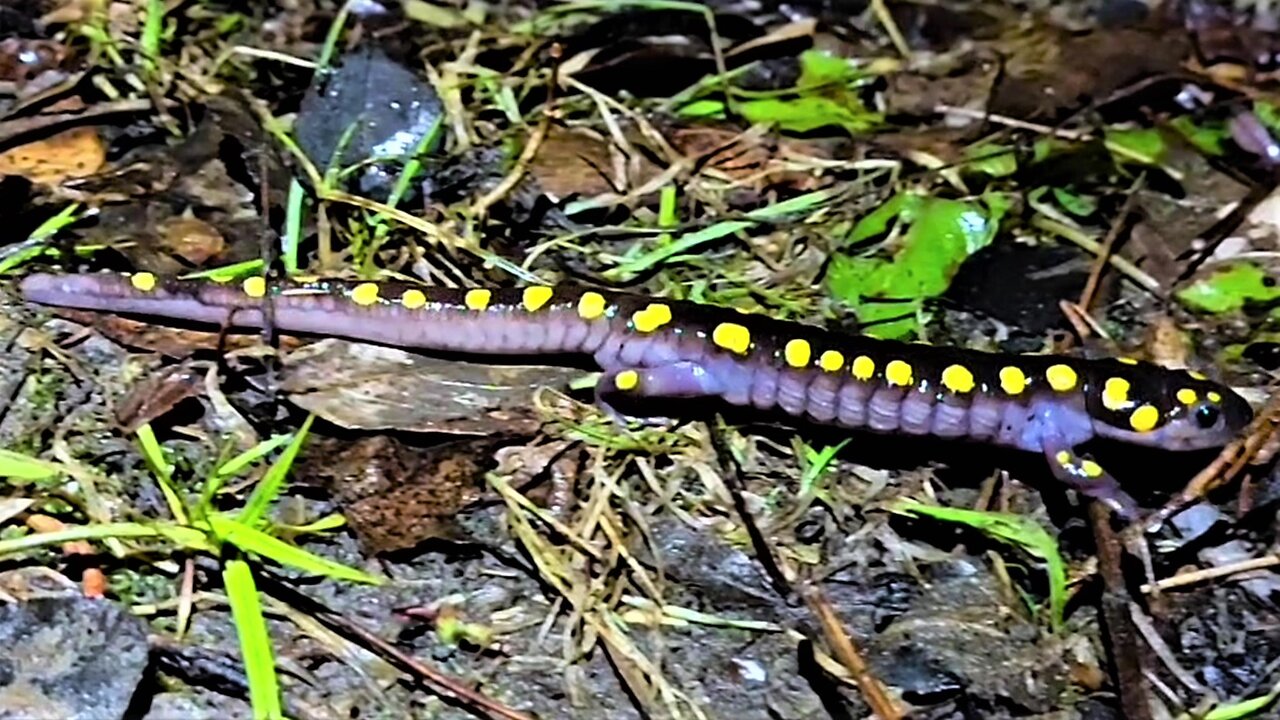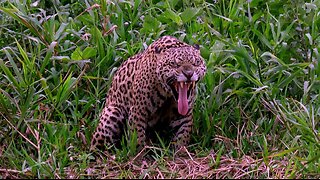Premium Only Content

Spotted salamander spring migration is an incredible event to witness
Spotted salamanders are fascinating creatures that live in most forests throughout central and eastern United States and Canada. They are abundant yet we rarely see them. Like other salamanders, they live under leaves and logs, and in the burrows of small rodents and mammals, spending a great deal of the year underground. They eat worms and insects and keep to themselves.
But every year, these salamanders move in unison in great numbers, seeking the closest pond or vernal pool for breeding.
They prefer small bodies of water without fish, which would eat their eggs. The salamanders can journey considerable distances to find their breeding grounds. This migration takes place at night in the early spring when the snow and ice have just begun to melt. Signaled by their hormones, they wait for the first rainy night that is more than 7°C (45°F) to make their trek to the water. The males arrive first and deposit sperm on the leaf litter in the pond. The females arrive soon after and gather the sperm pouches, taking them inside their bodies to fertilize their eggs. They lay the eggs in masses of up to 100 eggs, attached to submerged sticks near the water's edge.
Salamanders have an amazing regenerative ability that allows them to regrow limbs, organs, and even portions of their brains if they are injured. Scientists are particularly interested in understanding this ability and how it might benefit humans.
Spotted salamanders are unique from other species in several ways. They are the only vertebrate animal in the world that hosts another organism in a symbiotic relationship. Typically, when a vertebrate is a host to another organism, it is a parasitical relationship, having no benefit to the host. In this case, the salamander eggs contain an algae that uses sunlight to create energy and oxygen. This benefits the eggs by helping to sustain them as they grow and develop. The algae benefits from the stability and protection of the egg and also from the carbon dioxide that it consumes, which is produced by the eggs.
The spotted salamander also lays eggs that are coated with a unique outer jelly to prevent the eggs from drying out. On some eggs, the jelly morphs into a water soluble, protein based substance, and on other eggs, it becomes a crystalline protein that repels water. The fact that it develops into two different types allows for the survival of eggs when wood frog larvae are present. The wood frogs would eat the water soluble eggs and deplete the population of salamanders. This is where the algae in the eggs is crucial because the crystalline jelly prevents oxygen absorption from the water.
Nature can be complex and fascinating beyond our expectations. The world around us is more of a wonder than we once realized and we would not even realize it if we did not take a close look at some of the small creatures that are right under our feet.
-
 1:18
1:18
WildCreatures
1 month ago $2.91 earnedTourists unintentionally come face to face with jaguar in Brazil's Pantanal
16K17 -
 LIVE
LIVE
Tundra Tactical
3 hours agoProfessional Gun Nerd Plays Battlefield 6
47 watching -
 LIVE
LIVE
SavageJayGatsby
3 hours agoFriend Friday – Goose Goose Duck Chaos! 🦆💥
52 watching -
 58:55
58:55
Roseanne Barr
5 hours agoJOSH HAMMER | The Roseanne Barr Podcast #120
154K171 -
 1:23:12
1:23:12
Kim Iversen
3 hours agoRFK, JFK, Trump, Charlie Kirk — Deep State Assassinations? | Sean Stone
12.6K44 -
 LIVE
LIVE
EricJohnPizzaArtist
3 days agoAwesome Sauce PIZZA ART LIVE Ep #66: Blabs from Side Scrollers!
70 watching -
 LIVE
LIVE
Nikko Ortiz
1 hour agoNew Army Machine Gun In Insurgency Sandstorm... |Rumble Live
58 watching -
 27:54
27:54
Michael Franzese
4 hours agoDeep Dive Into The Epstein Crime Scene Mystery
30K15 -
 1:08:45
1:08:45
DeVory Darkins
7 hours agoLetitia James drops frantic speech after pleading not guilty as Canada gets NIGHTMARE NEWS
58.4K34 -
 LIVE
LIVE
StoneMountain64
6 hours agoBattlefield 6 Class Locked Breakthrough and Attachment Unlocks
30 watching